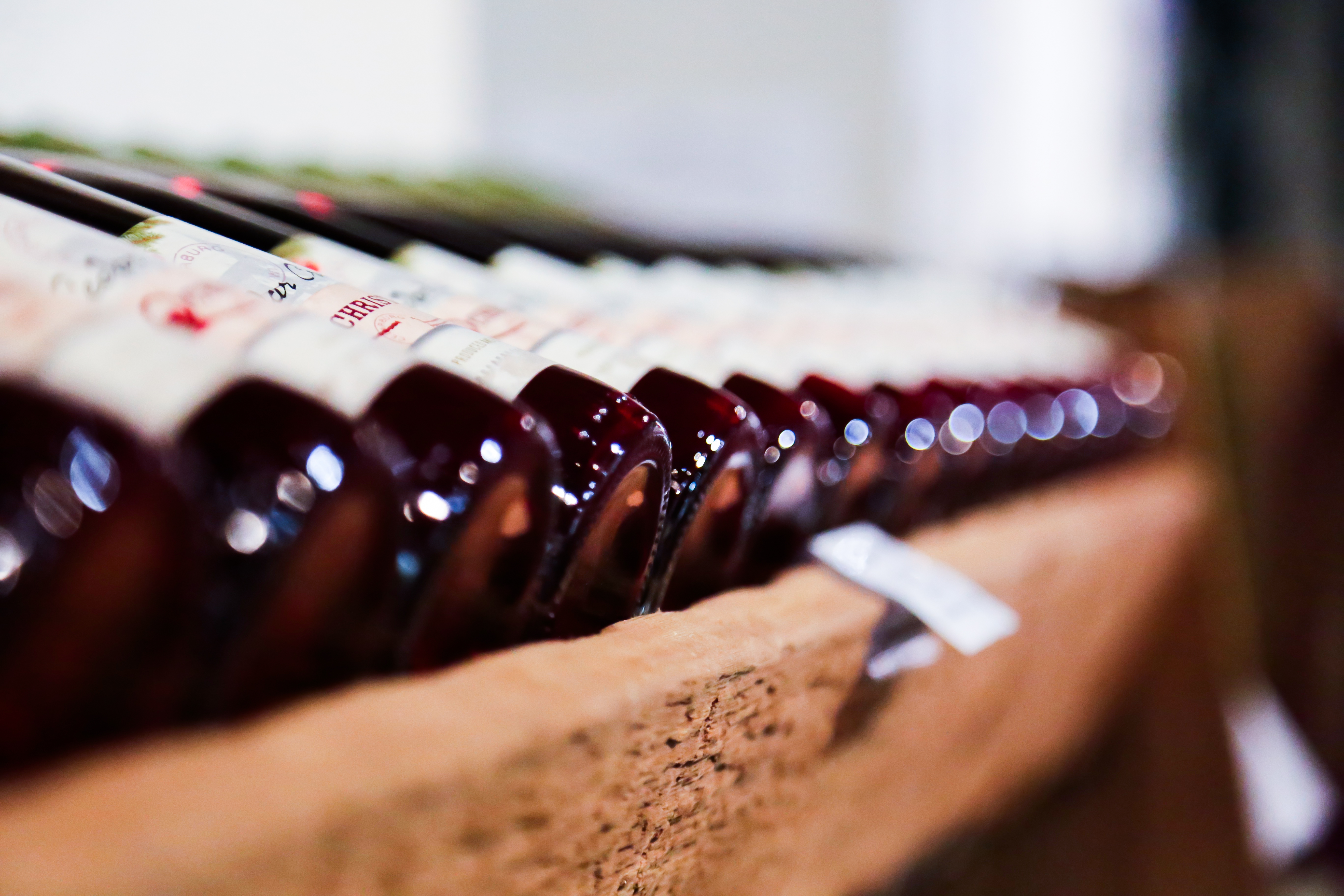Popping the top on Wisconsin’s wine industry
When Agoston Haraszthy, a Hungarian immigrant, established vineyards and a wine cellar in Wisconsin in the 1840s, he may not have predicted he would one day be known as the Father of American Grape Growing. Haraszthy’s land, tucked away in the hills across the Wisconsin River from Prairie du Sac, is today’s Wollersheim Winery.
Grapes have been grown in Wisconsin since the 1840s, including those planted by Haraszthy. However, cold winters and humid summers made grape growing for wine a challenge for many Midwestern states. As interest in wine and wineries increased across the country, the introduction of cold-hardy grapes in the industry followed. The state currently has 80 wine producers and 200 acres of vineyards, with more than half of the wineries coming into existence in the past decade. Such recent growth in the Wisconsin wine industry has attracted attention and highlighted the advancements in grape growing and winemaking in the Midwest.
Mother nature’s toil
The onset of Prohibition in 1919 ended winemaking nationwide, as vineyards need years to be established. That, in combination with the blustery winters in Wisconsin, stifled winemaking in the Badger State for some time. It was after the end of Prohibition in 1933 that winemakers began to enter the scene once again in Wisconsin.
Aspiring winemakers in the state needed a grape that could withstand extreme seasonal changes. This proved to be no easy feat, as finding such a grape would take extensive trial and error. Julie Coquard, current co-owner of Wollersheim Winery, highlights the processes her own father took while planting vineyards at the Wollersheim property.
“We grew some of those first varieties as test varieties. The Saint Pepin is a variety that is an American hybrid, and we had that in 1976 as a test field,” Coquard says.
Her father eventually found the right grape varieties that would do well on their site and would produce Wisconsin wine consumers enjoy today. In addition to the right varieties, winemakers require expertise and vineyard know-how.
According to a 2014 University of Minnesota study, cold-hardy grapes lead the pack when it comes to wine and grape growing industries in Wisconsin. Eighty-three percent of grapes grown in the state are cold-hardy, and 58 percent of grapes used in the production of Wisconsin wine are cold-hardy.
Coquard says the introduction of cold-hardy grapes made it more reliable for Wisconsin winemakers to grow grapes at home. These grapes are damaged less by winter, compared to grape varieties that aren’t specifically bred to be hardy in Wisconsin. They also produce wine that has its own unique taste and aroma.
It’s important to note that Wisconsin wines are not uniquely based on the grape variety. There are other factors that contribute to taste, such as yeast, when grapes are picked, and fermentation length and temperature.
A different aroma
Botham Vineyards, located in the rolling hills and farmland of Barneveld, in the southwestern corner of Wisconsin, prides itself on crafting distinctive regional wines of national and international acclaim. With a fruit-forward approach, Botham Vineyards is a vine-to-bottle winery in Wisconsin, meaning they grow, produce, bottle and sell their wine at their location.
The next Napa?
With Wisconsin’s wine industry generating almost $3.6 billion in total economic value for the state in 2017, it begs the question: Could Wisconsin be the next Napa Valley?
One of the main things that makes Wisconsin different from Napa Valley is space. Napa Valley is about 26 miles long and holds more than 400 wineries. In contrast, the state of Wisconsin is 54,375 square miles and has 110 licensed wine producers. However, Wisconsin is similar to Napa in the sense that there are winery trails and regions across the state where tourists can stop at several wineries in a single afternoon.
From wineries like Wollersheim that have been around for years to wineries like Hawk Mills Winery that just started in the past decade, Wisconsin’s wine scene is flourishing. Such growth leads some experts to question if the industry can sustain itself.
According to Nick Smith, UW-Madison’s enologist — a wine and cider specialist — a potential indicator for the future of Wisconsin’s wine industry is the boom of wineries in other Midwestern states. Smith says looking for similar states that previously had winemaking booms can be good predictors of how the wine industry will turn out in Wisconsin.
Smith says he thinks Wisconsin winery popularity will continue to strengthen in years to come. With that being said, while changes in the industry will occur over the next 10 years, it takes generations for the wine industry to develop in a region.

Obstacles to overcome
Hawks Mill Winery in Browntown, Wisconsin, is considered a newcomer in this booming industry. Started just a few years ago in 2015, Hawks Mill Winery uses the customer experience to set itself apart from the competition.
Teresa Joranlien, co-owner at Hawks Mill Winery, says their motto was never crafted with the intent of making award-winning wine, even though they have won several international awards. With a majority of their profits generated from retail sales in their tasting room, Hawks Mill focuses on creating a memorable and friendly experience at their winery.
Hawks Mill is not alone when it comes to generating profits. According to the University of Minnesota study, the primary challenges to the future of wine in Wisconsin are sales and government regulations. Nearly three-fourths of wineries in the state are located in rural regions. The study points out that those wineries generate 80 percent of their sales from tasting rooms.
Wisconsin wineries must focus on attracting visitors to their locations, rather than just selling bottles at a store. Eighty-four percent of wineries in Wisconsin operate a tasting room at their facility. Of those who have tasting rooms, it is estimated that each winery served more than 16,000 customers there.
“When you are going to distribution, you’re giving up a fair percentage of cost to keep the price at the store level somewhat reasonable,” Joranlien says. “So yeah, your margins are definitely much higher on your tasting room sales than they are through distribution.”
The study also points out that many of these rural wineries work closely with the tourism industry in the state because their futures are intertwined, something that differs from other states.
Growing competition in the industry will also dictate the future of wine in Wisconsin.
“Every time a new winery opens, the piece of the available pie gets smaller. So, you have to be really smart and really good to thrive in an environment where the market gets smaller and smaller and smaller,” Botham says.
She adds that despite these fluctuations, people still continue to explore wine in the state.
While the future of Wisconsin’s wine industry is unknown, the present is here for wine drinkers to enjoy. Botham encourages everyone, from those exploring wine and learning about it to those who consider themselves wine aficionados, to embrace and enjoy Wisconsin’s blossoming wine industry.
“Get out and do some tasting and find what you love,” Botham says. “Visit the wineries, visit the vineyards, take part in the events, bring your friends. It’s a great way to spend an afternoon.”


Mel is a senior studying journalism with a certificate in digital studies. When she grows up, Mel hopes to take the communications world by storm, hopefully working in travel public relations.
When she is not writing for classes in the J-School or for her job at Travel Wisconsin, she spends her free time running Bucky PR, the only student-run public relations agency on campus. Mel is a firm believer in the power of inspirational quotes and a strong advocate of #WineWednesday.
While she does not know where she’ll end up for sure, she knows as long as she’s doing something she’s passionate about and she’s surrounded by the people she loves, she’ll be in the perfect place.

